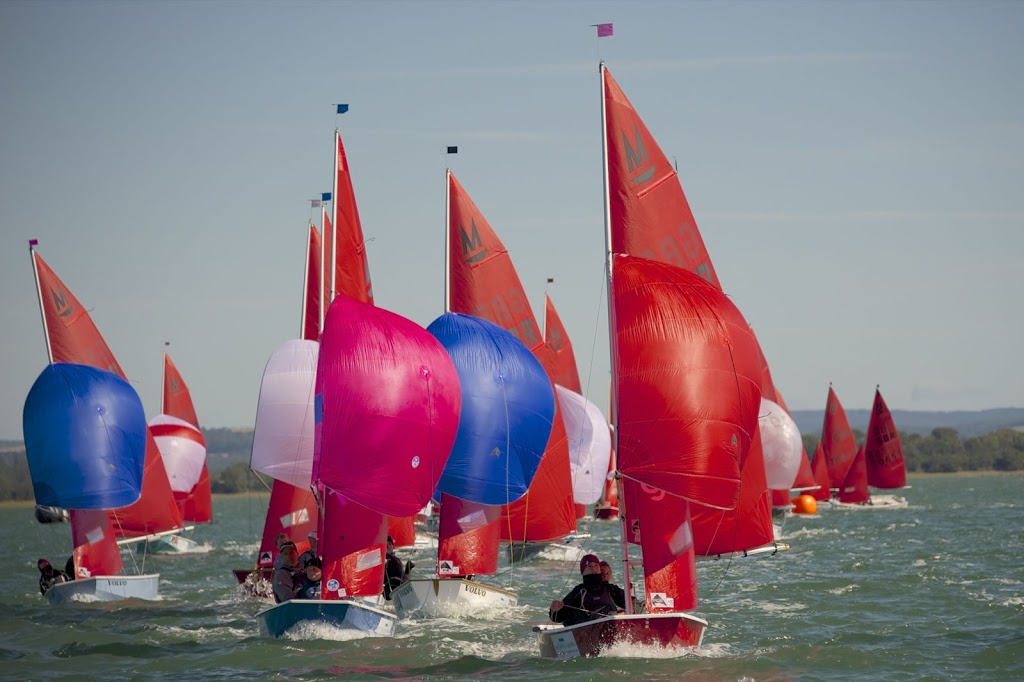
The fitting of the mast steps is described in the Bell Woodworking building instructions (i.e. for a gunter rigged boat) as follows
"The Mast Steps (53) are two square blocks of wood which determine the alternative positions of the mast according to the rig under which you are sailing.
You will remember that the mast step web was fixed into position below the fore deck at right angles to and between the forward and stowage bulkheads; the mast steps are situated along the centre line at the distance shown in the illustration, (Plate 52) which brings them directly over the mast step web. These can now be glued and screwed into position, with 1" X 8 (guage) screws."
The mast steps illustrated in Plate 52 are those fitted to Mark 2 interior boats (i.e. all wooden boats above about sail number 723).
 |
 |
Earlier (Mark 1 interior) boats had circular wooden mast steps and a corresponding circular cavity in the heel of the mast.
Wooden mast steps take quite a beating from the compression loads of the mast, only made worse if you race with the commonly recommended (high) rig tension.

Repairing a damaged wooden step with epoxy resin with thickening additives can help, or you can purchase a high density plastic mast step from Trident-UK or Pinnell & Bax.
The forward mast step (and corresponding forward shroud blocks) allow the mast to be stepped further forward, so boat to be sailed without a jib, while remaining correctly balanced (i.e. centre of effort of the mainsail vertically above the centre of lateral resistance of the hull). The forward mast position cannot be used while racing. Racing boats often omit the forward mast step. Some cruising Mirror sailors use the forward mast postition (with a jib) to give more room.
As noted above, the dimensions in plate 52 apply to a gunter rig mast and should produce a legal mast position. If you want to get close to the permitted tolerances, the class rules regarding mast step position (at the time of writing - 2018) are
For boats equipped with a gunter rig the following shall apply. The centre of the mast step shall be minimum 2145 mm and maximum 2175 mm forward of the forward face of the aft transom at deck level.
For boats equipped with a Bermuda rig the following shall apply. The Intersection of the fore side of the spar and surface of the foredeck butt strap or the mast step mounting surface shall be minimum 2145 mm and maximum 2175 mm forward of the forward face of the aft transom at deck level.
The difference is to ensure the luff of the mainsail on a Bermuda rig boat is in the same place as on a Gunter rigged boat. Because of the gaff, the mainsail luff is about 28mm aft of the aft edge of the gunter mast. With a Bermuda rig (consider a 50mm tube mast with a track, like a Needlespar or the Selden 4240 section) the luff is within a few mm of the aft edge of the mast tube, so the mast has to be further aft to compensate.




